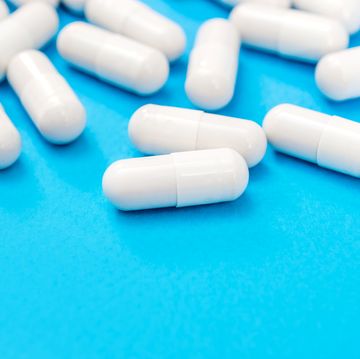Your coworker's cologne, an overly air-freshened car, that waft of smoke clinging to a stranger’s coat—for most of us, those are just temporary annoyances. But for others, everyday odors can be debilitating, and according to a new study in the Annals of Family Medicine, the number of people who suffer from chemical intolerance is higher than most doctors suspect.
"Some people have tremendously adverse reactions to very low levels of chemicals—chemicals most of us can't even smell," says study author David Katerndahl, MD, a professor of family and community medicine at the University of Texas Health Science Center at San Antonio. While as little as 2% of the public has been medically diagnosed as chemically intolerant—which means being so bothered by chemicals that you can’t leave home or function normally in public spaces—according to Dr. Katerndahl's study, 20% of the 400 adults he surveyed qualified as chemically intolerant.
Why are some more sensitive than others? The cause may be genetic, he says, or simply a result of constant low-level exposure to chemicals that causes an intolerance over time. According to the United Nations, the world’s production of chemicals is increasing at a rate of 3 to 4 % each year, and in the United States alone, there are more than 80,000 industrial chemicals used to produce consumer products.
What’s worse, people with chemical intolerance are also more likely to suffer from allergies and panic attacks, and be more likely to have major depressive disorder and abuse alcohol, finds the study. (Could you have an anxiety disorder? Here's how to tell.) Other conditions the chemically intolerant are more prone to: heart problems, bronchitis, asthma, pneumonia, sinusitis, hypothyroidism, autoimmune diseases, irritable bowel syndrome, and migraine.
There's no single chemical or group of chemicals that are linked to chemical intolerance, says Dr. Katerndahl, meaning your best bet is to avoid as many chemicals on a whole as you can. Here’s how:
Start at home. Fragranced products, vinyl shower curtains and bedding, and antibacterial products are the three primary sources of hazardous chemicals in the average US home, according to a study published earlier this year from the environmental nonprofit Silent Spring Institute. Eliminate those, and you're on your way to a healthier indoor environment. (Learn more ways to clear your air at home with Is The Air In Your Home Making You Sick?)
Say no to plastic. Whether it's hormone-disrupting bisphenol-A lining your soup can or in the plastic water bottle you just bought, all plastics contain a huge array of dangerous materials—including brain-damaging flame retardants, cancer-causing UV stabilizers, and hormone-disrupting antibacterial chemicals—that you can ingest. (BPA is bad news; see just how bad with BPA Now, Heart Disease Later.)
Go organic. Pesticides used in chemical farming, particularly organophosphates, have been shown to trigger gastrointestinal and heart problems in people with multiple chemical sensitivities. Even if you don't suffer from a chemical intolerance, you're protecting yourself from seriously sketchy chemicals by buying organic as much as possible.












